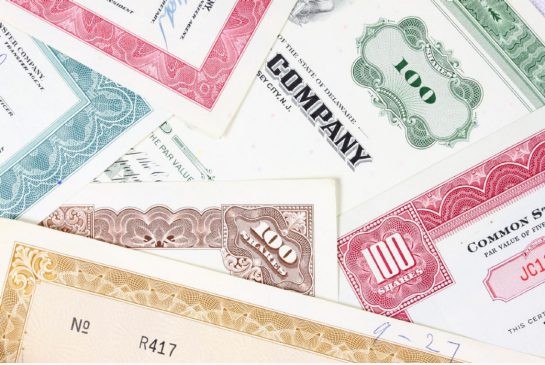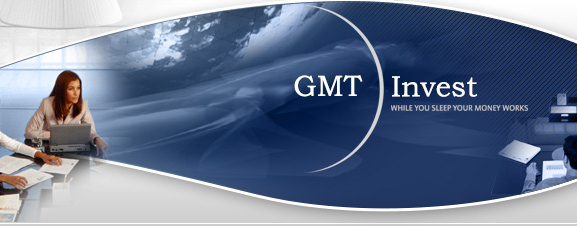Investing in ADRs Investment U
Post on: 18 Июнь, 2015 No Comment

by Dr. Scott Brown Monday, September 14, 2009. Issue #1092 Market Trends
It’s official: You can reduce your investment risk simply by chucking darts at a list of stocks, then buying them.
That’s if you believe a Nobel economist, of course. His crude experiment was the start of modern portfolio theory decades ago. The downside, however, was that with a reduction of risk came a dampening of profits. So scratch that idea.
How about this? A startling study in the late 1970s showed that owning a portfolio of large U.S. companies with international divisions drops your risk 10% below a domestic stock portfolio. Much better. But that wasn’t the eye-popper.
The study also found that owning stocks in international companies cuts your risk in half.
Take that, efficiency theorists! Yet the stuffy professors still tried to refute these results. It was a losing battle, though, as more studies emerged, laden with more evidence that international stocks reduce risk.
But the most startling thing? The studies indicate that adding international stocks to your domestic portfolio may even increase your average profits.
But how do you buy stocks in foreign companies trading in London, Hong Kong, or São Paulo? By investing in ADRs. let me explain.
How to Go Overseas Without Even Getting On a Plane
Let’s say you want to buy shares of an English company, trading on the FTSE-100 index. You’d have to convert your cash to pounds, buy the stock, wait to sell it at a profit, then convert it all back to U.S. dollars.
If the greenback strengthened. you’d make a profit on the stock but lose on the conversion!
In a word: Ugh.
This is why the vast majority of investors buy a managed international mutual fund. This allows the experts to run overseas with your bag of cash and make the investments for you.
But is this really smart?
As early as the 1960s, some economists confirmed that fund managers can’t forecast stock prices well enough to cover their own expenses, let alone make you a profit. In the end, all economists — regardless of their background — agreed that the performance of a managed mutual fund is worse than throwing darts at a list.
Here’s a better way.
Investing in ADRs: Harness JP Morgan’s Secret Weapon
In 1927, a chain of retail stores wanted to list on the NYSE.
Problem was, all the stores were in England!
Even for JP Morgan — the greatest investment banker of all time — this one was tricky. But he came up with a solution: He bought a big block of the retailer’s shares on the London Stock Exchange and put them in a trust.
Then he sold shares of the trust on the NYSE. These shares were called American Depository Receipts — or ADRs for short.
The company was Selfridges. And with Americans able to invest in a well-managed foreign company with far less risk, the shares sold like hotcakes. And thanks in no small part to this early access to American money, Selfridges is renowned and still thriving today.
So if you want to toss darts around, you could randomly add 3-7 ADRs to your portfolio — a move that will cut your portfolio risk in half, while increasing your profits.
For example, you can go to www.adr.com and throw darts at companies like Holland’s Aegon NV (NYSE: AEG ), China’s Acorn International Inc (NYSE: ATV ), or Brazil’s Aracruz Celulose SA (NYSE: ARA ).
But randomly picking foreign companies is pretty reckless. Here’s how to invest in international stocks properly.
The Four Advantages of Investing in ADRs
What if you knew which international companies were primed to explode in share price? That’s exactly the kind of profitable information that New Frontier Trader readers get all the time.
So here’s my four-point guide for selecting the best foreign ADRs and how they can roll back your risk, even as they ramp up your returns.
One of the main advantages that ADRs offer is that stocks in two different countries don’t move together.
When you hit the ground in most foreign countries, it’s a whole new economic, political and cultural landscape.
So even if your U.S. stocks are going down, your ADRs might be rising. Take Argentina’s Banco Macro (NYSE: BMA ), for example. You could have bought it on July 6 for $16.34. It’s currently trading around $22.85. That’s a 40% return in just two months.
International Investing Tip. Buy at least three different high potential ADR stocks, operating in at least three different international countries.
Okay, so what about countries that are chaotic — either economically, politically, or in terms of corruption? Places where managers tread in fear day by day.
Check out Transparency International’s Corruption Perception Index. It’s a good measure of social disarray. The United States has a relatively low corruption score of 18, while Somalia has the highest at 180.
Managers become slothful when business is easy. But imagine trying to do honest trade in a pirate haven like Somalia?!

And how about the BRIC economies — Brazil, Russia, India, and China? The corruption score is 96. In fact, Russia alone scores a whopping 147 on the global Dewey, Cheatem & Howe scale. Not even Superman’s x-ray vision would help an economist’s macro analysis.
But intense social disarray breeds the toughest managers, and the companies that rise to the top, despite the chaos, are often the pick of the bunch.
One such firm is Ecopetrol (NYSE: EC ). It’s the largest integrated oil company in Colombia. You could have bought it on May 18 for $19.31 per share. By Labor Day weekend, it was trading at $26.41 for a tidy return of 37%!
International Investing Tip. Look for outstanding management where Wall Street doesn’t expect to find any.
Studies have proven that Wall Street analysts are incapable of honestly reporting opportunities in their home market. And they’re even more misleading if you try to follow them overseas.
The analyst’s real job is directing traffic where Wall Street’s CEOs and their boards want order flow to go. If executives need to cash out their options, the analyst’s opinion is suddenly upgraded to a green light.
Frankly, Wall Street doesn’t make a dime helping you find a potential fortune in developing countries.
But there are a few outstanding individuals like Warren Buffett. who are skilled at spotting hidden jewels. So you could just buy Berkshire Hathaway (NYSE: BRK-B ).
But we have a better way: Go direct!
Take China, for instance. Getting solid information from this murky, mass-demand economy is like pulling teeth from a shark!
But if you had the edge, you could have bought shares in the massive Chinese Holiday Inn, with more than 500 budget hotels in more than 90 Chinese cities. Had you bought Home Inns & Hotel Management (Nasdaq: HMIN ) at $15.19 on May 12, you’d be sitting on an 88.1% gain in just four months.
International Investing Tip. Target markets that Wall Street doesn’t want you to understand.
Foreign companies located in faraway lands that rise to the top of their regional markets are special. By the time the world’s biggest investment banks invite them to become an ADR, they’re pumping out profits like one of J. Paul Getty’s oil rigs.
South America has hidden Copa Airlines (NYSE: CPA ) from American investors until just recently. You could have bought the stock for $32.22 on May 27. Today, it’s trading for $43 — a fast return of 33.4%. In addition, the firm’s operating margin is 20.3%. Compare that to margins at Southwest (2.1%), Jet Blue (6.5%), or American (-3.4%).
Time after time, history has shown that the best way to combine reduced risk with explosive returns is to invest in overseas markets, where Wall Street doesn’t want you to look.
It all starts with education,














